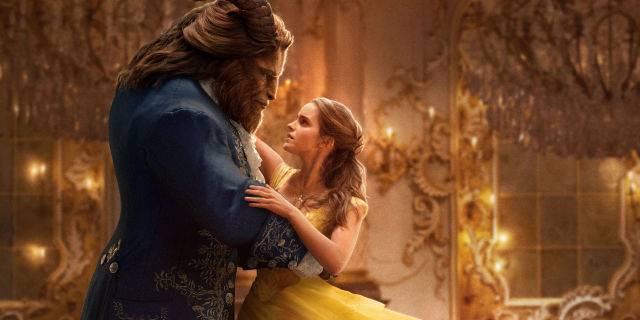These days one is sitting in the afterglow of revisiting an old childhood classic, Beauty and the Beast. A live-action film has recently been released, with real actors. It’s a darker, more modern take on the cartoon and as an adult viewer, you see things differently. The biggest musing is of beauty. Belle, the beautiful and intelligent heroine, eventually falls in love with a cantankerous, surly Beast with a softer side nobody had really seen before Belle. It also complicates things that Belle is his prisoner in his castle—she exchanged her father’s freedom for hers—and the Beast is a beast because he was a nasty little aristocrat who cheesed off a fairy. All of this makes it a fairy tale, but is also supposed to have a moral to the story—to not take people at face value, that you can change, that what’s on the inside is what counts. Too bad it only seems to be a one-way street.
It’s perfectly all right for women—beautiful, intelligent women who are ambitious and clever—to be gently encouraged to fall for a beast. The Beast is horrible. He’s rude, he’s prone to roaring and breaking things when he is angry (which is almost all the time) and he’s a hairy, gnarled, horned monster. There is nothing charming or nice about him at all. Why on earth should Belle love him? Her liking him is more than enough of a favour. But we don’t see it that way, because women should be nice. Women should give beastly men a chance, because maybe they’re nice guys, deep down. Everything is forgiven if you give someone a library while keeping them under house arrest.
That would be all right with me if it went both ways. I’d like to see charming, handsome, clever men patiently woo ugly, angry women in movies and in real life because they want to discover the amazing person underneath the bristling facade. To excuse and smooth over pettiness and rage because oho, let it go, she had a really terrible father and her mother died when she was young, and then well, it’s pretty annoying to be a Beast for decades. But it’s pretty annoying to be Belle too, I imagine. Being stuck in a poky little village full of small-minded people who think you’re odd because you like to read and don’t want to marry the village stud because he is a violent and obtuse dingbat. Villagers who basically think anyone different to them can be shoved in a mental asylum and can be whipped into a blood-thirsty mob baying for blood in a matter of minutes. Being stuck, dreaming of having the world, but keeping house for your eccentric father instead. That would make one pretty surly, I imagine.
But women aren’t meant to be angry, and so Belle is feisty and brave, but not openly antagonistic or even sarcastic, ever. She politely closes the door in Gaston’s persistent, marry-me face, meekly picks up her ruined washing from the town dhobi-ghaat and goes home. The worst temper she shows is telling Beast that she won’t have dinner with him. From behind the door in the room where she’s being held prisoner. That’s not particularly angry. Not even close, especially given that the man would have gladly let you starve. The women who are actually angry are always portrayed as witchlike, evil-tempered shrews. The nastiest woman in the village, the one who is first to propose killing the beast, putting Maurice in the asylum and giving Belle what’s what for teaching village girls to read turns out to be Cogsworth’s forgotten-by-magic wife. Yep. The only openly angry woman in the film is the one who turned to vinegar without her man. At the end of the film it’s supposed to be funny that she is clutching her husband fervently as he writhes and mutters “turn back into a clock”, because he would rather be a clock again than have to deal with his wife. The angry woman doesn’t get—or, it seems, deserve—a happy ending, but the angry man—Beast—does.
Why are we so afraid of angry women? What is it about female anger that produces an immediate urge to shut it down? Angry men are often seen as brave, proud, passionate; a man with a cause. Nobody told Braveheart to settle down and drink a glass of water, but Joan of Arc got burned at the stake for her cause. Angry women are always, always framed negatively because for some inexplicable reason, when a woman is wronged and she responds, she’s overreacting but when men do the same, they are protecting their integrity. Female emotions are just not allowed—you can’t be amorous, you can’t be irate, you can’t be enraged. You can only be nice, or sad. In other words, a doormat that smiles or cries, ergo utterly harmless. You don’t have to be afraid of a nice or sad woman because she won’t snatch a gun out of her purse and shoot you dead or spit in your tea or imprison you in their dark and scary castle because they were in a bad mood and you were being annoying. Angry women don’t get rescued by a bright and kind young man, they’re Maleficent—lonely and vengeful witches who are mean to babies, and are always just taking things out of proportion. Except who decides what proportion is appropriate in the first place? If the patriarchy had it their way, it would be zero. angry young men are heartthrobs; smouldering, sarhiyal heroes—and angry young women? They don’t even exist.






